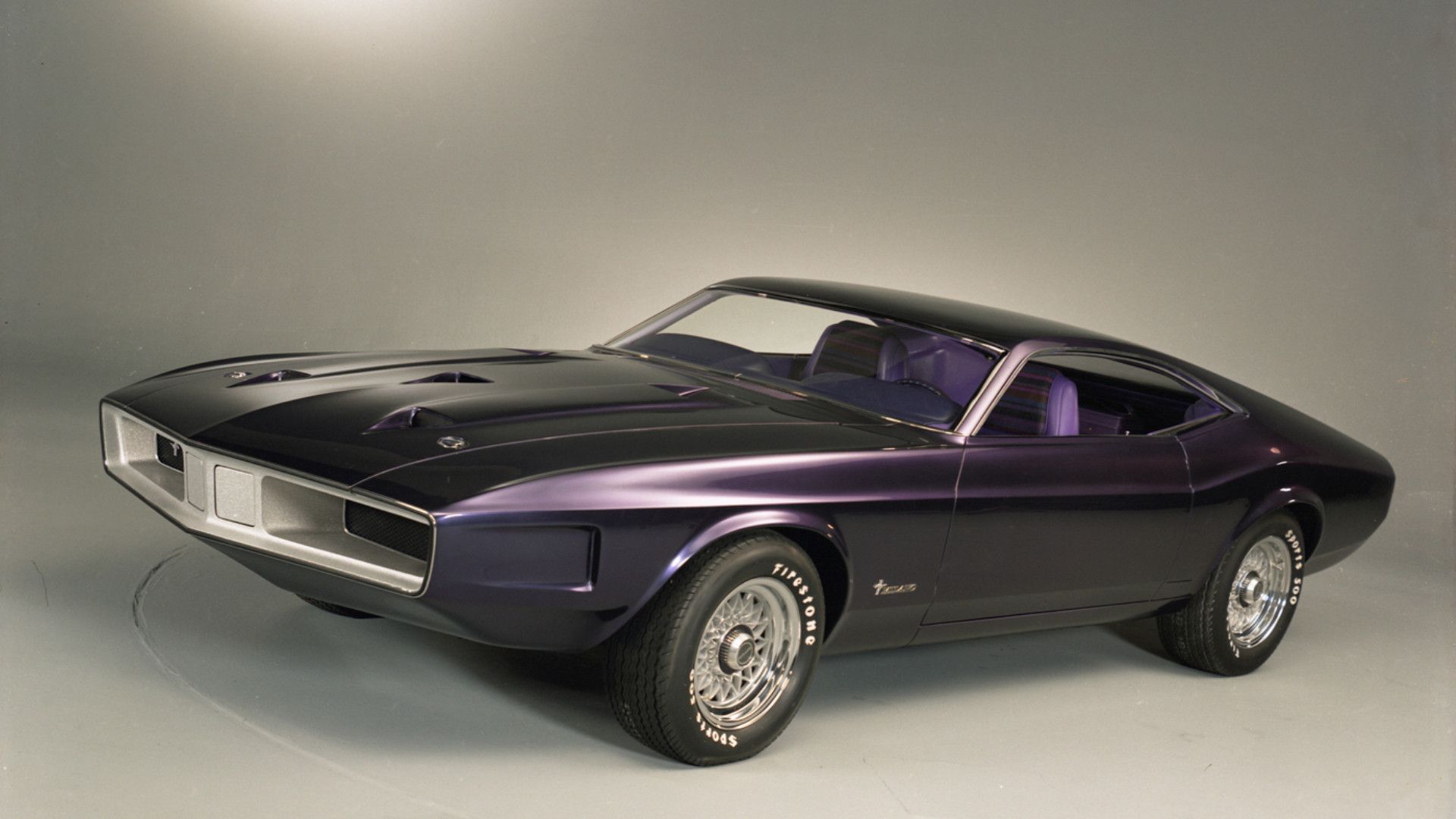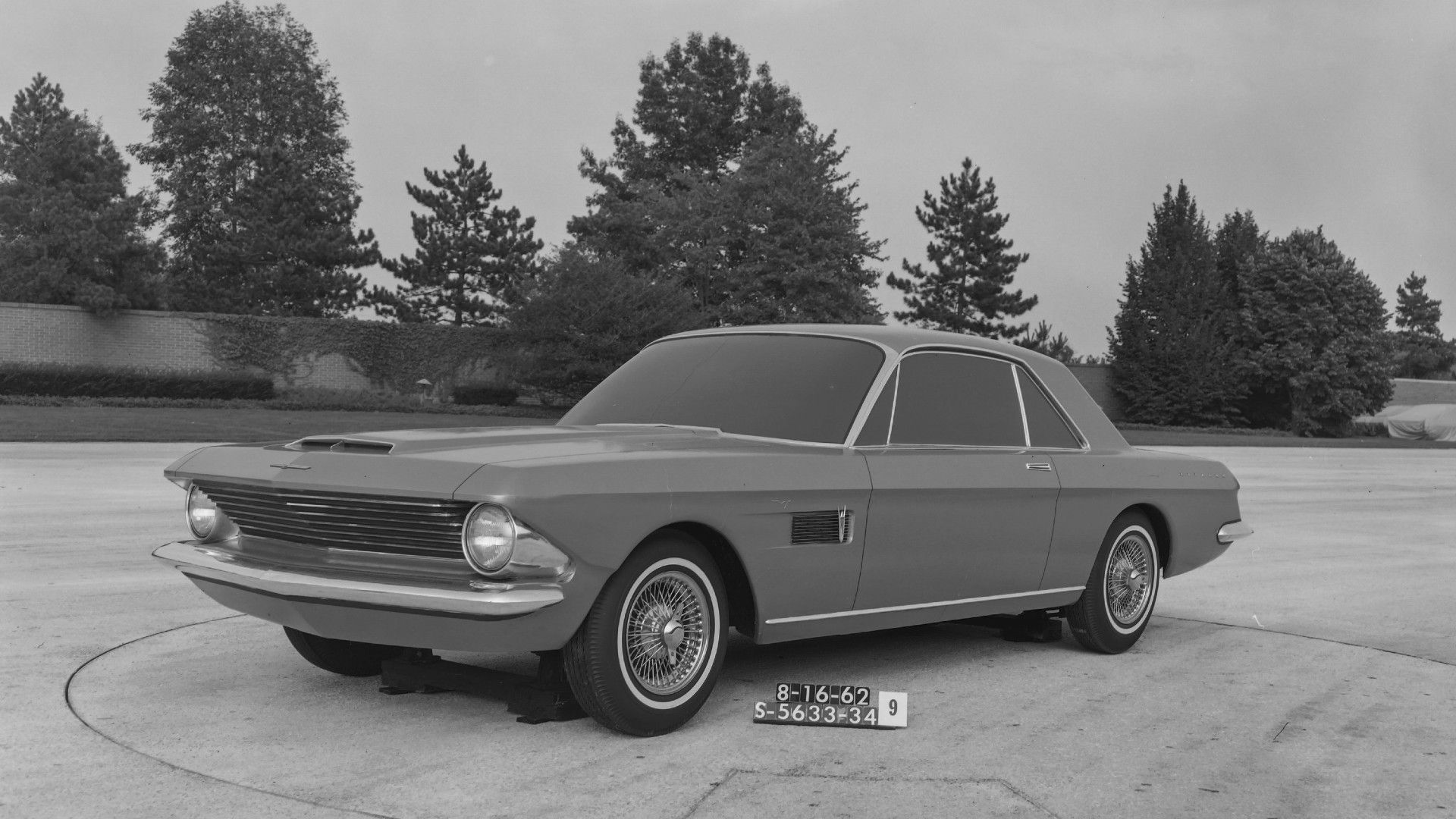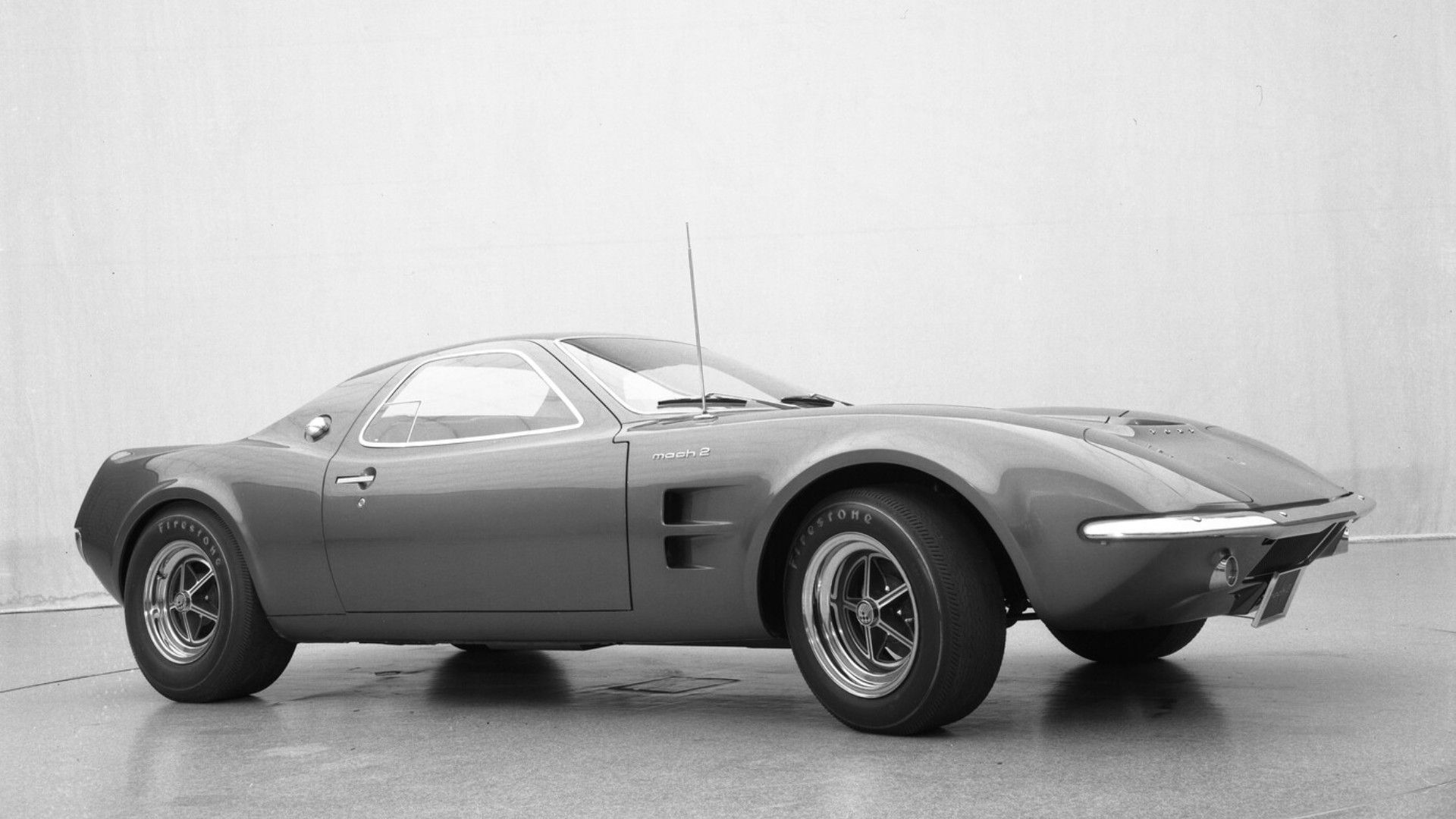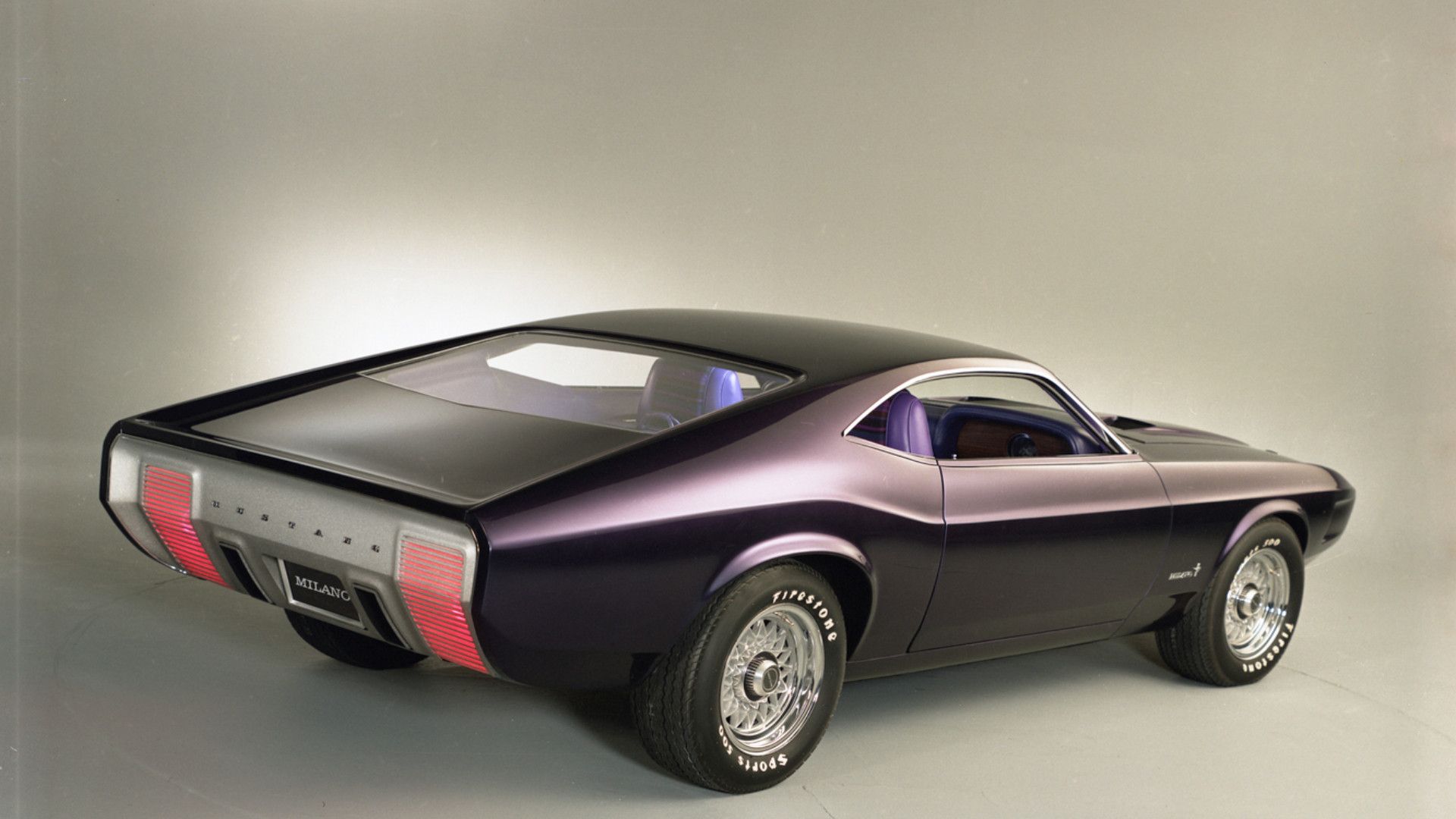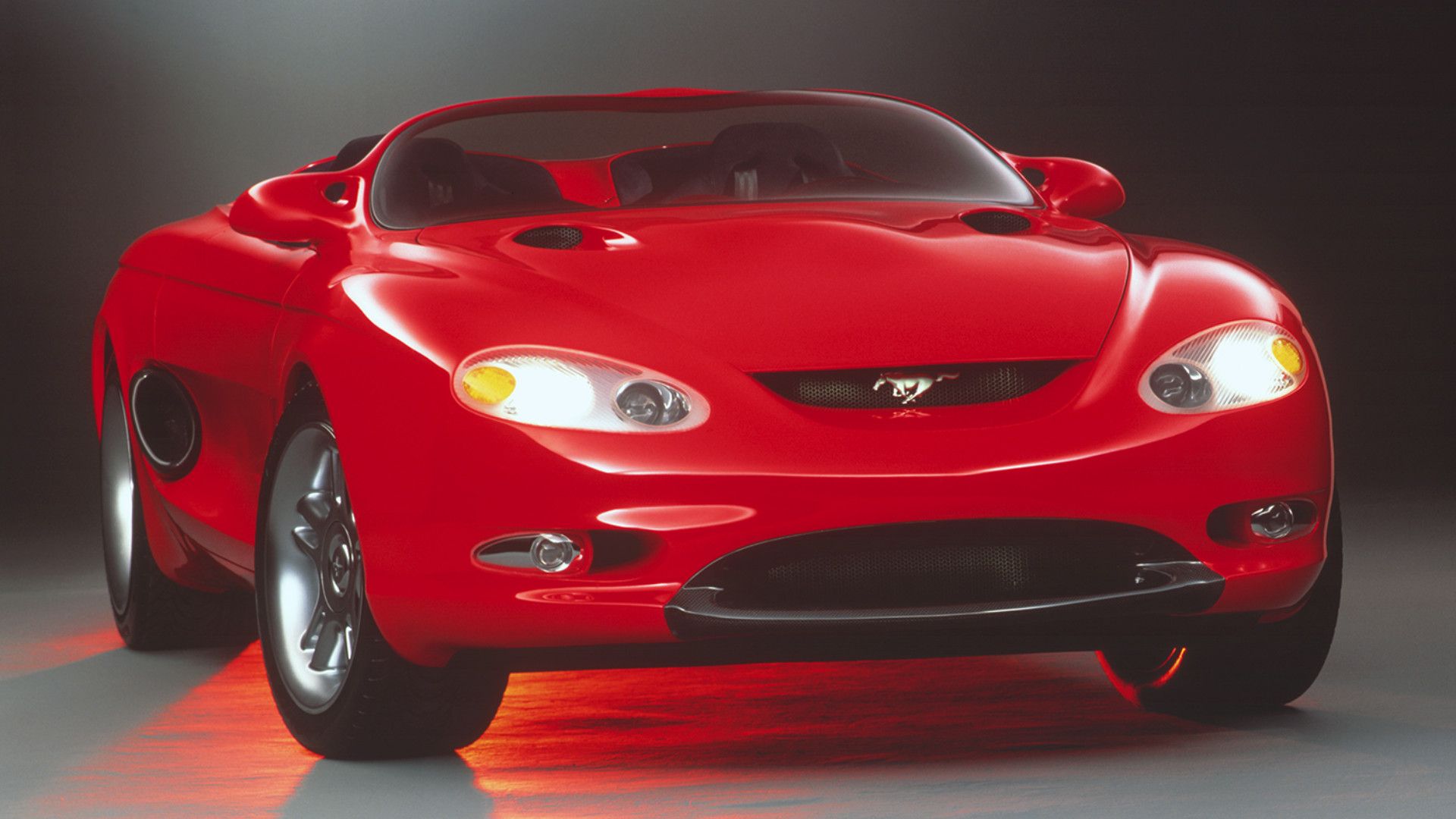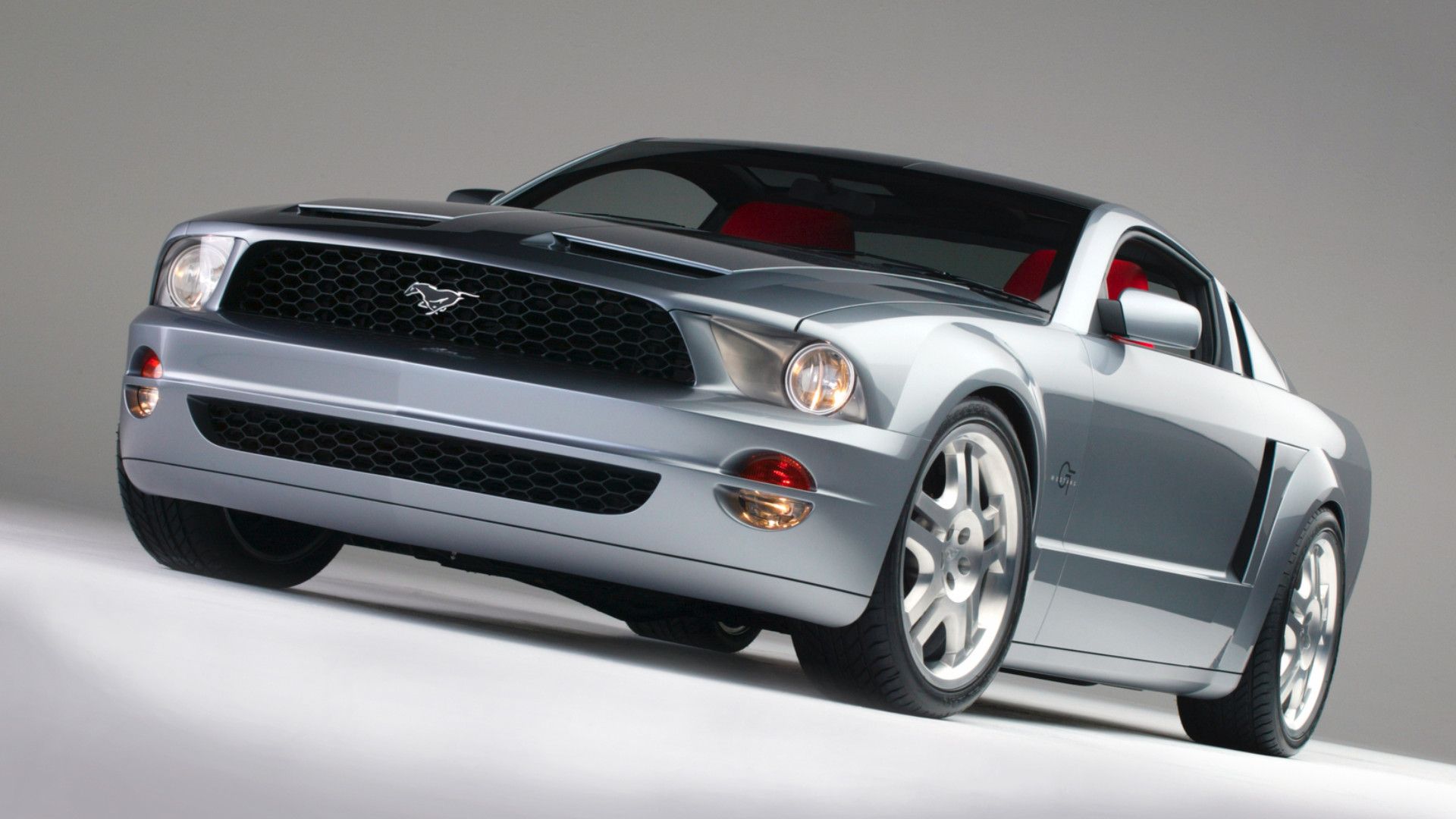Summary
- Ford Mustang concept cars have played a crucial role in shaping the iconic American pony car, influencing its design and features.
- Many stunning Mustang concept cars never made it to production but still contributed to the rich history of the Mustang.
- From the early Allegro Concept to the Super Mustang Coupe GT, each concept car showcases different design elements, engine specifications, and unique features that captivate car enthusiasts.
The Ford Mustang has taken the form of coupes, hatchbacks, fastbacks, and convertibles. The American pony car has always amazed car enthusiasts in whatever shape and size. Since its first year of production in 1964 and through its evolution to its latest Ford Mustang GTD Supercar guise, Ford has gone through a ton of design studies to achieve such status.
Behind every successful iteration of the Ford Mustang is a Mustang concept car that was showcased to the public to gauge the market’s reaction to new, often radical, designs. Aside from getting the pulse of consumers, vehicle prototypes can act as catalysts to pique the interest of buyers before a new model is rolled out. Developmental Mustang cars also serve as test beds for various style changes and new technologies planned for future production Stangs.
A long list of concept cars helped Ford achieve a formula that has helped the Mustang achieve mass appeal, value for money, and an iconic status that makes it pretty much ageless for all car enthusiasts. While Mustang concept cars look amazing, most never made it to the production line. We pay tribute to them for their contribution to enriching automotive history.
We gathered information from Ford and reputable websites like MotorTrend, TopGear, and Hagerty to come up with a list of the most stunning Mustang concept cars ever made.
10 1961 Allegro Concept
Amid the mission to find the automotive Holy Grail for the brand, the Ford design team led by Gene Bordinat worked on several studies for a sporty coupe based on the Falcon compact. Between 1961 to mid-1962, the initial drawings were that of a fastback that featured rear-facing seats in the second row. They came up with names internally, like the Avanti and the Avventura. The latter progressed to the physical stage of the process, where the hatchback was replaced by a trunk, and the second-row seat took the conventional front-facing orientation.
While the design team worked on 13 versions that reflected influences from Europe, the Allegro design study never got the green light from the top guys at Ford. The car never hit the production line, but the Allegro Mustang concept influenced how the first-generation Mustangs looked– with a long hood, compact cabin, and a short deck at the rear.
9 1963 Cougar II Concept
When General Motors started the production of their new Corvette model, the C2, in 1962, Ford had an inkling that the stylish coupe might dominate the sports car market if they didn’t give consumers another option. They were already on the drawing board even before the C2 was unveiled.
The concept cars were built on the collaboration that resulted in the A/C Shelby Cobra. The American carmaker was able to get the chassis of Cobra’s eighth production unit with chassis number CSX2008. Design chief Bordinat spearheaded the development of the new bodywork that featured lines similar to the C2 Corvette that was about to hit the market. This car was given the name Cougar II.
Engine Specs (Intended)
| Manufacturer | Ford |
| Production Years | 1963 |
| Configuration | V-8 |
| Displacement | 4.2 Liters |
| Power | 260 Horsepower |
| Torque | 269 Pound-Feet |
Ford intended the Cougar II to have a 4.2-liter V-8 mated to a four-speed transmission under its hood. If ever the engine was installed, the estimated top speed of the vehicle would have been 170 MPH. The Cougar II performance numbers would have put the Shelby Cobra to shame. Unfortunately, that wasn’t the case. The Cougar II appeared at the Ford Pavilion during the 1964 World’s Fair in New York, where the near-production version of the first Mustang was also showcased.
Before the Cougar II Ford Mustang Concept, an earlier design study had the same internal code, the Mustang Cougar Proposal. Yes, Ford almost called the Mustang a Cougar.
8 1965 Mustang Shelby GT350 Prototype
When the Mustang eventually hit the market in 1964, the car world was enamored. Ford sold 22,000 units of the Mustang on its first day, and over a million after 18 months. The car that later became the basis for the famous Holywood car Eleanor, while popular, was far from being a true muscle car. With the top brass of the Ford management worrying about how to keep the momentum going, the company approached automotive icon and legendary racer Carrol Shelby for his input.
Shelby agreed to come up with a Mustang that would outperform any car on the racetrack. In order to meet the deadline of the Sports Car Club of America for the production class, the carmaker sent 110 1965 K-Code Fastback Ford Mustangs to Shelby in Los Angeles. The shipment included all parts needed to develop the high-output Ford Mustang that eventually became the Shelby GT350 prototype. A hundred examples were produced.
Engine Specs
| Manufacturer | Ford |
| Production Years | 1965 |
| Configuration | V-8 |
| Displacement | 4.7 Liters |
| Power | 306 Horsepower |
| Torque | 329 Pound-Feet |
Sporting the Wimbledon White paint they’ve been known for and the blue stripes on their hoods, the Shelby-badged Mustangs were dressed to impress. The prototype with a modified body, and suspension, among other elements to meet the SCCA’s requirements, was powered by a heavily refined version of the Mustang’s engine that cranks out 271 horses. The output of the cast iron block was more potent at 306 horsepower and 329 pound-feet of torque, enough to bring the car from 0 to 60 MPH in 6.6 seconds.
7 1967 Shelby GT 500 Prototype (Little Red)
The 1967 Shelby GT 500 Prototype is not just another fancy Mustang development car. Lovingly nicknamed Little Red because of its Candy Apple Red paint, the prototype is an essential piece of the history of the iconic American muscle car. Yes, a colorful story to add, too, because it disappeared for several decades. Initially thought to have been crashed, the long-lost Little Red was only found in 2018 in a field in Texas and restored by the folks at Barrett-Jackson.
Engine Specs
| Manufacturer | Ford |
| Production Years | 1967 |
| Configuration | V-8 |
| Displacement | 7.0 Liter |
| Power | - |
| Torque | - |
The story of the GT 500 Mustang Prototype was a fascinating one. It was the only 1967 Mustang notchback GT coupe built and sent to the Shelby workshop with dual-quad carburetors and the first that featured a 428 FE engine that came straight from the Ford factory. The Shelby team did their wonderful work to give the car a stretched front end with a new hood, a rear spoiler, side scoops, and other modifications. It had the EXP 500 label on the side, which means it’s an experimental GT 500. Of course, they also tweaked the engine for higher output, but no official performance figures were released. While official numbers were not published, there were accounts of how ludicrous the ride was. The supercharged prototype had no issues hitting 80 MPH from idle and, one time, was stopped by cops in California for going at speeds near 140 MPH.
6 1967 Ford Mach II Concept
Another tantalizing Mustang concept car is the 1967 Ford Mach 2. This study of a Ford Cobra-style vehicle aimed to produce a road sports car that is an affordable, two-seater, high-performance vehicle that would retail at around $7,500.
Engine Specs
| Manufacturer | Ford |
| Production Years | 1967 |
| Configuration | V-8 |
| Displacement | 4.7 Liters |
| Power | 271 Horsepower |
| Torque | 312 Pound-Feet |
To achieve this, the carmaker sent a 1966 Mustang convertible to Kar Kraft, a race shop that was set up to serve the wish list of Ford. A feasibility car painted in light blue was the first prototype. With the availability of the 1967 Mustang platform, Ford reportedly built two more mid-engined mules in red (street) and white (racing). For the newer version of the experimental car, the vehicles were modified to fit the 289 engine with the Colotti transaxle for the first version, and with the ZF unit for the two cars on the ‘67 Mustang platform.
Just like its Little Red cousin, the red Mach II concept also has a good dose of mystery that comes with it. No one knows where the vehicle is. It was last seen in a 1969 video at Kar Kraft.
5 1968 Shelby EXP 500 Green Hornet
The Green Hornet Mustang concept car is another notchback prototype that was used to test the then-emerging style lines and automotive technologies. The sibling of Little Red was originally meant to be the GT/CS prototype. It was eventually sent to the Michigan office of Shelby where it received various experimental modifications.
Engine Specs
| Manufacturer | Ford |
| Production Years | 1968 |
| Configuration | V-8 |
| Displacement | 7.0 Liter |
| Power | 475 Horsepower |
| Torque | - |
The most notable part of the development was the seven-liter V-8 block equipped with a Conolec fuel injection system. According to estimates, the Shelby EXP 500 Green Hornet was able to produce 475 horsepower and hit 0 to 60 MPH in 5.7 seconds, and averaged a top speed of 157 MPH during its test runs at Ford’s proving grounds.
The Green Hornet was more fortunate than its fellow EXP 500 prototype Little Red. It changed hands from the hands of a Ford employee who sold it to a Ford dealer in Michigan, and then later on owned by Steve Davis, the president of Barrett-Jackson. Now it is in the hands of Craig Jackson, the CEO of the auction firm.
4 1970 Mustang Milano Concept
Car enthusiasts first saw the gorgeous Mustang Milano Mustang Concept car in February 1970 at the Chicago Auto Show. The experimental car showcased the design lines of the would-be 1971 Mustang. The experimental car showcased the design lines of the would-be 1971 Mustang. It had two massive vents that hid the headlamps and served as the car's grille. The two-seater also looked sleek with an almost horizontal fastback rear end that somehow looked similar to the 1970 Torino.
Named after Milan, Italy, where grand tourers prowled, the Milano concept Mustang was seven inches lower than the Mustang SportsRoof. The windshield of the vehicle was also at a steep 67-degree angle. Its taillights featured a warning system that changed colors when the driver was accelerating, coasting, or braking. The ultra-violet-painted car with cast aluminum wheels looked better than the production version of the Mustang the following year. The car’s DNA was evident in other Ford models, such as the Falcon XB coupe that hit the Australian market in the mid-'70s. It is definitely one of the most popular Mustang concepts you didn’t know existed.
Ford did not release any technical information about the engine of this Mustang prototype.
3 1980 IMSA Mustang
This experimental pony car was named after the International Motor Sports Association (IMSA), the sports car racing governing body in North America. The Ford Mustang IMSA is a performance prototype that features elements that can help push the car to its limits. These include different aerodynamic elements, a modified shaker hood, wide fender flares, a deck wing spoiler, and wide Pirelli P7 rubber, among others.
Engine Specs
| Manufacturer | Ford |
| Production Years | 1980 |
| Configuration | Inline-Four |
| Displacement | 2.3 Liters |
| Power | 132 Horsepower |
| Torque | - |
Ford showcased the 1980 IMSA Mustang concept at that year’s Chicago Auto Show. Looking aggressive with white pearl paint accented by gold and orange stripes, the experimental Mustang had a 132-horsepower, inline-four 2.3-liter turbocharged engine under its hood. While the oil crisis during the decade somehow slowed down the development of performance Mustangs, this Mustang concept showed that Ford is constantly feeling the need for speed.
2 1993 Mach III
From a fox body Stang, the beloved pony car tried to show some curves. The 1993 Ford Mustang Mach 3 Concept showcased the new styling direction of the carmaker. It is a two-seater roadster that initially gives you a mid-engine vehicle vibe, but it actually retained the traditional front-engine configuration.
Engine Specs
| Manufacturer | Ford |
| Production Years | 1993 |
| Configuration | V-8 |
| Displacement | 4.6 Liters |
| Power | 450 Horsepower |
| Torque | 440 Pound-Feet |
Aside from the good looks, the Mach III also had a potent powerplant in the form of a V-8 that was borrowed from the Lincoln MkVIII. The 450-horsepower block is a 4.6-liter with an Eaton supercharger mated to a six-speed manual gearbox. With this specs sheet, the car can hit a top speed of 180 MPH. Going from 0 to 60 is also not an issue, clocking in at 4.5 seconds. While there were two examples of this concept car built, it did not get the nod of the bosses at Ford. However, its styling cues made it to the Fox-4 generation of Mustangs.
1 2003 Super Mustang Coupe GT
From the lateral C-scoops, tail lamps with three elements, to the ever-recognizable galloping pony emblem– these elements helped defined the long hood and short rear deck of the Mustang through the years. With the Super Mustang Coupe GT concept unveiled, the fans were blown away by its aggressive stance, new design language, and modern interior. The carmaker showcased the coupe alongside a convertible sibling.
Engine Specs
| Manufacturer | Ford |
| Production Years | 2003 |
| Configuration | V-8 |
| Displacement | 4.6 Liters |
| Power | 400 Horsepower |
| Torque | 440 Pound-Feet |
The exterior of the car revealed the true character of the iconic American muscle car. It’s very extroverted. Always ready to pounce. The concept car used the architecture of the rear-wheel drive Thunderbird, of course, modified to achieve the desired proportions. The design concepts for this Mustang were penned by the Living Legends Studio in Michigan and the California Design Center of Ford. While showcasing modern lines, the inspiration from the 1968 Ford Mustang GT Fastback was evident. Under its hood is a V-8 that outputs 400 horsepower and 390 pound-feet of torque.

